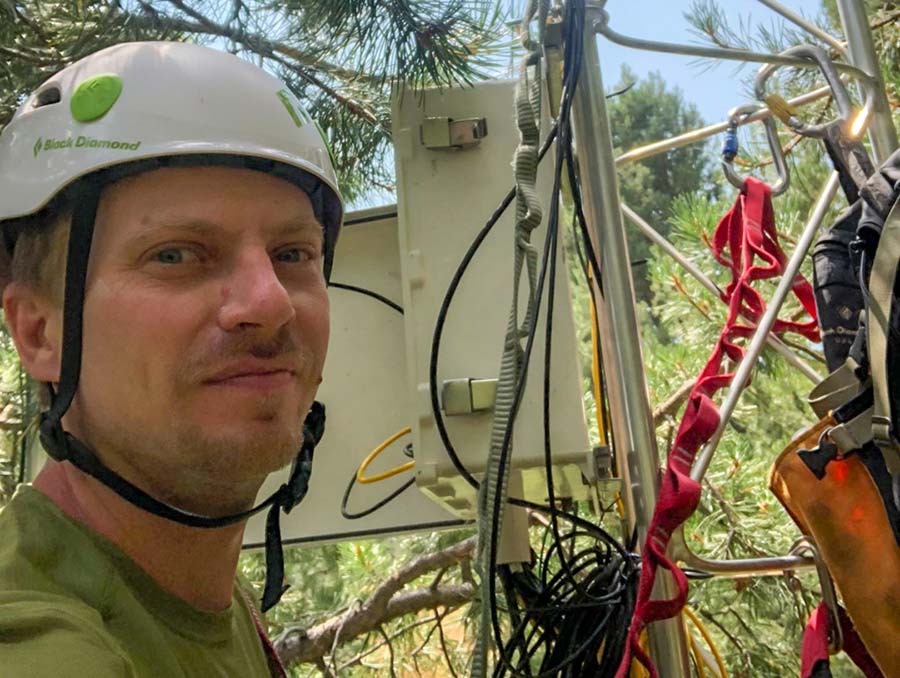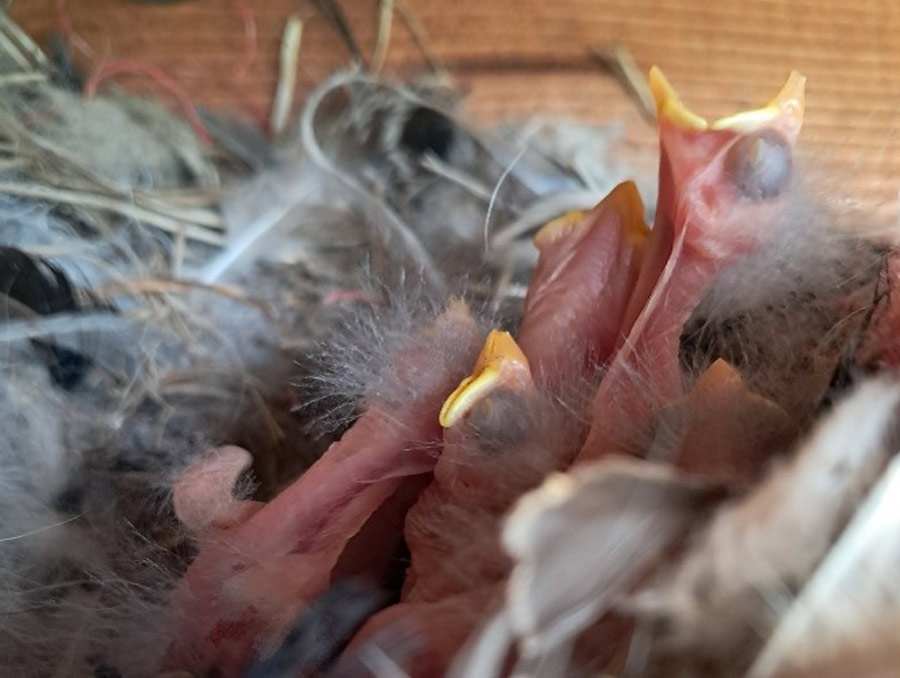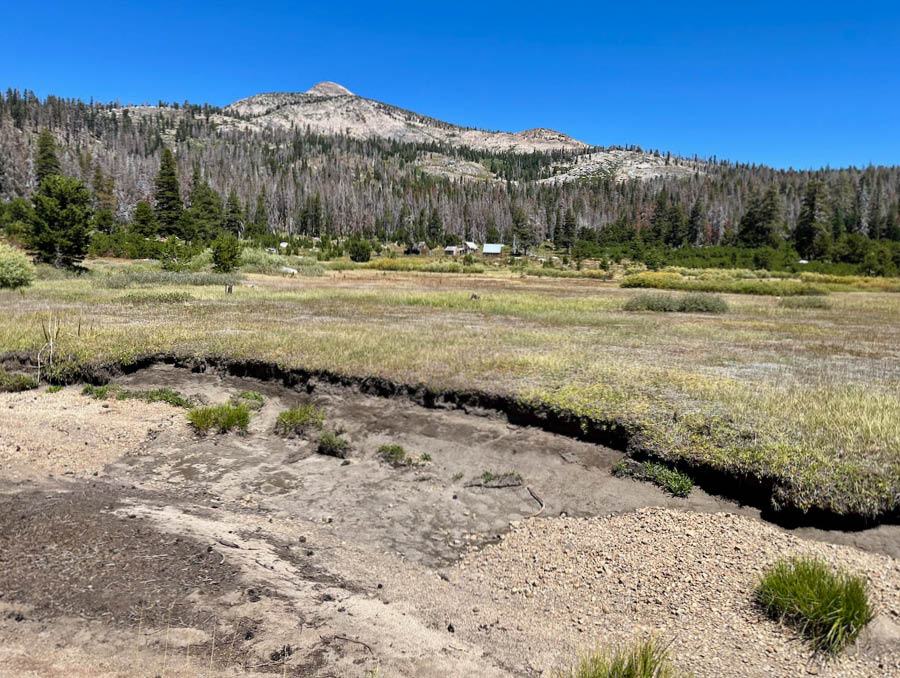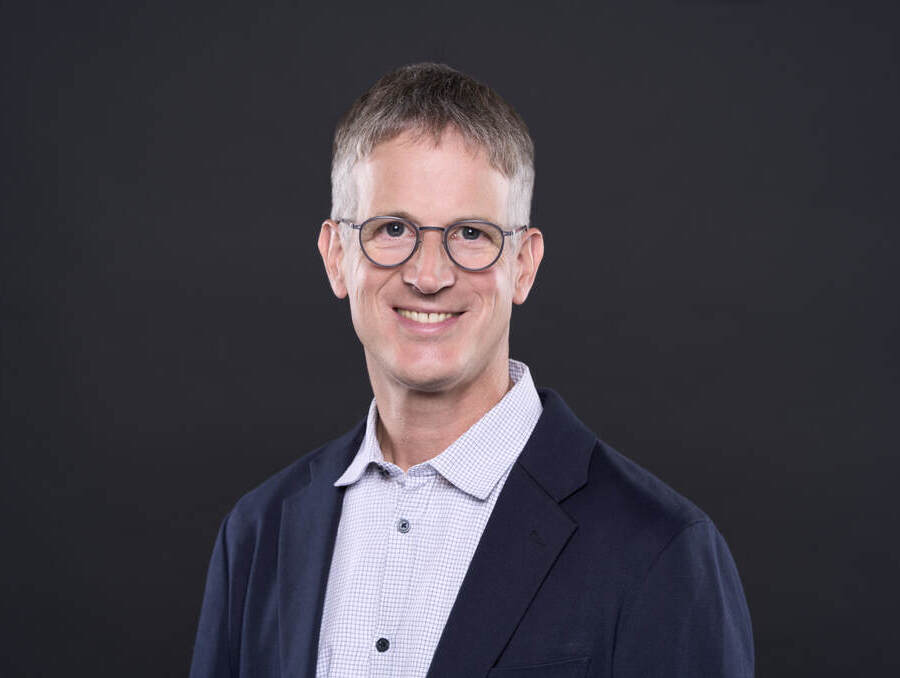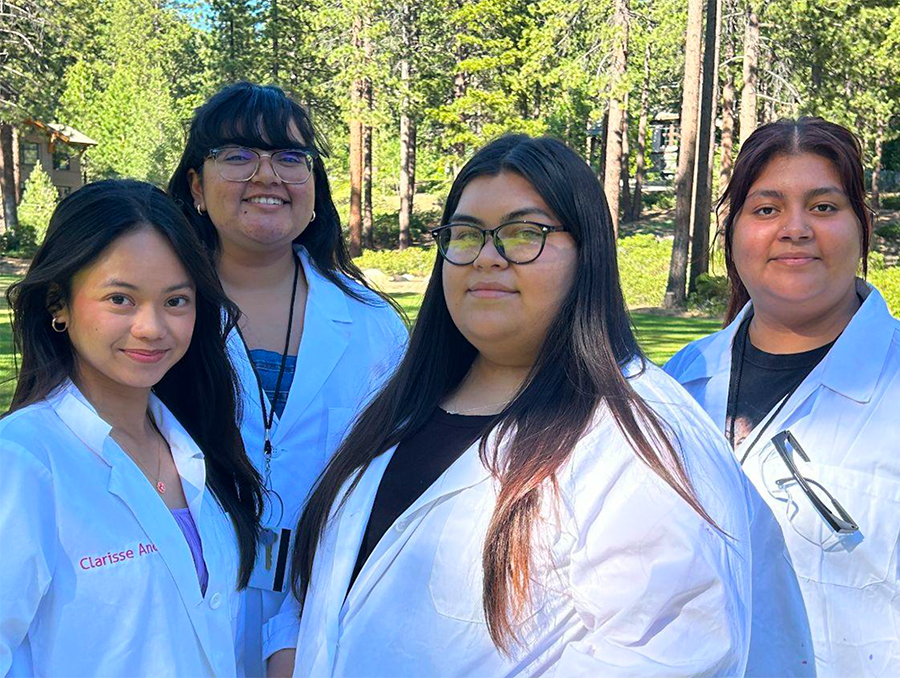As winter approaches, many of us are “thinking snow” so that we can hit the slopes. But, one scientist at the University of Nevada, Reno has loftier concerns about our area’s snow patterns. Adrian Harpold’s research regarding snow droughts, snowmelt, and how climate change is impacting our forests and water resources has earned him the honor of being selected as one of four scientists internationally to receive the 2021 Hydrologic Sciences Early Career Award from the American Geophysical Union (AGU).
The international scientific society is comprised of 60,000 members in 137 countries who work to advance earth and space science. Across the globe and 23 different areas of scientific research, one being hydrologic sciences, only 28 early career scientists were honored for their meritorious work or service toward the advancement and promotion of discovery and solution science.
Harpold is a natural resources and environmental science associate professor with the University’s College of Agriculture, Biotechnology & Natural Resources. His work focuses on better understanding how changes in climate affect mountain ecosystems, and he has been a part of the American Geophysical Union for over 10 years.
“Receiving an award from the preeminent earth science organization in the world is hugely rewarding for me,” Harpold said. “The AGU is truly a beacon for advancing our knowledge of the Earth.”
Harpold’s research program, Nevada Mountain Ecohydrology Lab, uses existing observation networks, remote sensing and other field observations to better understand ecohydrological processes in mountain ecosystems. The goal is to apply his research, which is partly supported by the University’s Experiment Station, to better manage forest and water resources in mountain environments, especially in times of drought and floods. Some specific examples of Harpold’s research include:
- Helping to define snow drought and why it matters
- Improving understanding of how humidity impacts snowmelt
- Understanding soil moisture response to changing snowmelt and rain
- Using remote sensing (lidar) to understand ecohydrological processes in upland systems
Besides collaborating with numerous scientists in academia, Harpold has worked with many other organizations, such as the American Meteorological Society, National Oceanic and Atmospheric Administration’s River Forecast Centers, U.S. Geological Survey and U.S. Forest Service, in an effort to help them find answers and solutions to challenges they face. He especially enjoys involving his students in his research, and his role as a mentor.
“My lab group has included students of diverse nationalities, backgrounds, training and gender,” he said. “The days at field sites in the Sierra Nevada with students never get old. I love seeing new information and making an unexpected inference about how nature works with students and post-docs. Perhaps my most favorite part of this job is receiving news that a research mentee has landed their dream job.”
Harpold attributes much of his success to his students, as well as to his parents and mentors.
“I have had a lot of opportunities thanks to my parents, privilege and excellent mentors,” he said. “My students and post-docs here at the University have been an amazing group of human beings who have pushed me to new scientific and personal frontiers. There is a lot of opportunity to make the world a better place, and I want to take the privileged position I have to make that happen.”
